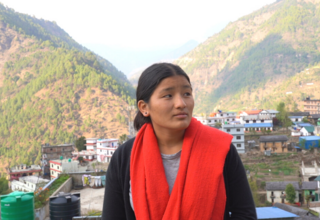Child marriage affects both boys and the girls, however, it disproportionately affects girls’ ability to enjoy their rights and freedoms, especially due to the serious risks of sexual and reproductive harms associated with this practice. Child marriage triggers a continuum of reproductive and sexual harms and violations by exposing girls to forced initiation into sex and unprotected sex, as well as early, unplanned, and frequent pregnancies. Women and girls subject to child marriage are likely to face slavery-like practices such as servile marriage, sexual slavery, child servitude, child trafficking, and forced labor.19 According to the Nepal Demographic Health Survey (NDHS), 47% of women who first had sex before age 15 and 29% of women who first had sex between ages 15-19 have stated that their initial experience was forced and against their will, and a majority of these cases occurred within marriage.
The purpose of "Ending Impunity for Child Marriage in Nepal: A Review of Normative and Implementation Gaps" is to identify and inform policymakers, law enforcement officials, and human rights defenders, of the key legal gaps and inconsistencies that have undermined efforts to address child marriage in Nepal, particularly in light of the constitutional guarantees, national laws, and international human rights standards. This assessment highlights multiple challenges faced in the implementation of the existing affirmative laws and makes linkages to other causes of systemic discrimination in law and practice that contribute to impunity. It puts forward a set of concrete recommendations for addressing the gaps and challenges in order to promote access to justice for the victims of child marriage.
The policy brief was jointly produced by UNFPA, Justice and Rights Institute and Centre for Reproductive Rights.

